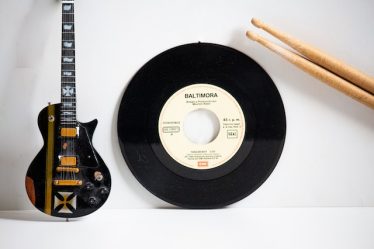
First published: 17 November 2021 @ 6:00 pm
Montessori Education is not for everyone. It is very specialized and the methodology of the school is very different from traditional schools.
The purpose of this article is to discuss how to use a Montessori Curriculum in your child’s education. This will provide the knowledge and learning tools needed for your child to be successful in school.

What is a Montessori Curriculum?
A Montessori Curriculum can be used as an alternative or supplement to a traditional curriculum in public schools or private schools. The Montessori method is designed to prepare children for life, which requires more than just reading, writing, and arithmetic.
It requires critical thinking skills, communication skills, problem-solving skills, confidence, self-control, self-motivation, etc.
The curriculum also focuses on life skills such as time management, hygiene and dressing habits, communication skills (oral and written), organization skills (to manage time efficiently), financial management (to manage money).
Moreover, it focuses on interpersonal skills (to make friends), perseverance (in learning new things), independence (to be able to function on their own) etc.
How Does the Montessori Curriculum Supplement Works?
The Montessori Curriculum will be used as supplementary materials to the child’s traditional education. The Montessori curriculum focuses on how children learn best, which is through doing, playing, and experimenting.
It teaches children to use their hands and eyes as tools for learning. For example, when a child is learning to write, the Montessori Curriculum will provide them with materials such as paper, pencils, erasers, glue sticks and scissors.
These materials are needed to create writing tools that can be used for writing. When a child learns how to write, he/she can then use these tools for other learning tasks, such as drawing pictures or cutting out shapes from coloured paper.
The Montessori Curriculum also provides the child with activities that stimulate his/her imagination so that they can create new things from scratch. In addition to the objects provided by the Montessori Curriculum, there are also items provided by the parent or teacher.
These objects may not have been thought of by the child but he/she will be able to use them to create a new object for writing letters or building a tower out of blocks.
The child may need help from another person in order to do these tasks correctly, but this will give him/her the experience of learning from another person.In order to be successful in school, the child will need to be able to learn new things quickly and retain the information they have learned.
The child will need time to practice these skills in order to learn how to do them correctly.
What are the Benefits of Using a Montessori Curriculum Supplement?
1. It enhances a child’s ability to learn new things quickly and retain the information they have learned.
2. Creates a positive learning environment for your child.
3. It helps children develop critical thinking skills, communication skills, problem-solving skills, confidence, self-control, self-motivation etc.
4. It provides children with opportunities to explore their environment and use their hands and eyes as tools for learning.
5. Focuses on life skills.
6. The Montessori Curriculum Supplement can be used as an alternative or supplement to a traditional curriculum because it prepares children for life which requires more than just academic skills.
What are the Suggested Materials for the Montessori Curriculum?
1. Glue Sticks, Paper, Pencils, Scissors, Stapler, Hole Punch, Letter Openers etc.
2. Fabric of choice, such as cotton, cotton blend or linen / cotton mix for garments or an apron or a plastic apron that can be washed and reused for each child.
3. Toys such as cars, trucks, blocks etc. that can be used for playing games such as roadblocks and tunnels etc.
4. Picture books with repetitive words such as ABC’s can be used to teach children the letters and sounds of letters through picture cards or by using toys such as alphabet blocks or flash cards which contain pictures of letters on them along with their sound names written on them.
5. You can also use other educational materials such as non-fiction books, computer games, audio tapes, DVDs, videos and CD’s.

What are the Limitations of Using a Montessori Curriculum?
1. There is a possibility that the child may get bored with doing the same things over and over again. In order to avoid this, you can have a variety of activities that will help your child to be creative.
2. It is not suitable for children who have learning disabilities or behavioural problems. If your child has difficulty doing something, it is best to have them do it with someone else who can help them do it correctly so that they learn how to do it on their own.
3. It is not suitable for children who have ADHD or any other type of learning disability because these children need specific teaching methods and this does not provide those methods. If your child has ADHD, then they will need more structured instruction from a professional therapist or teacher.
When Children Use Montessori Curriculum?
1. At the age of 3 or 4 years old, when children are ready to start school.
2. Before the age of 6 years old, when children are ready to start kindergarten or elementary school.
3. At the age of 6 years old when children are ready to start primary school (Kindergarten) or middle school (Grade 1).
4. Until the age of 18 years old.
In conclusion, the Montessori Curriculum can be used as an alternative or supplement to a traditional curriculum because it prepares children for life which requires more than just reading, writing, and arithmetic.
The Montessori Curriculum provides the child with opportunities to explore his/her environment, use their hands and eyes as tools for learning, play with objects, create new things, and interact with other children. The child will need time to practice these skills in order to learn how to do them correctly.
When it comes to your kids, it is best to spend your time giving them the best experience. Mature Parent is here to help you connect with your child, providing informative articles, tips, and tricks!



